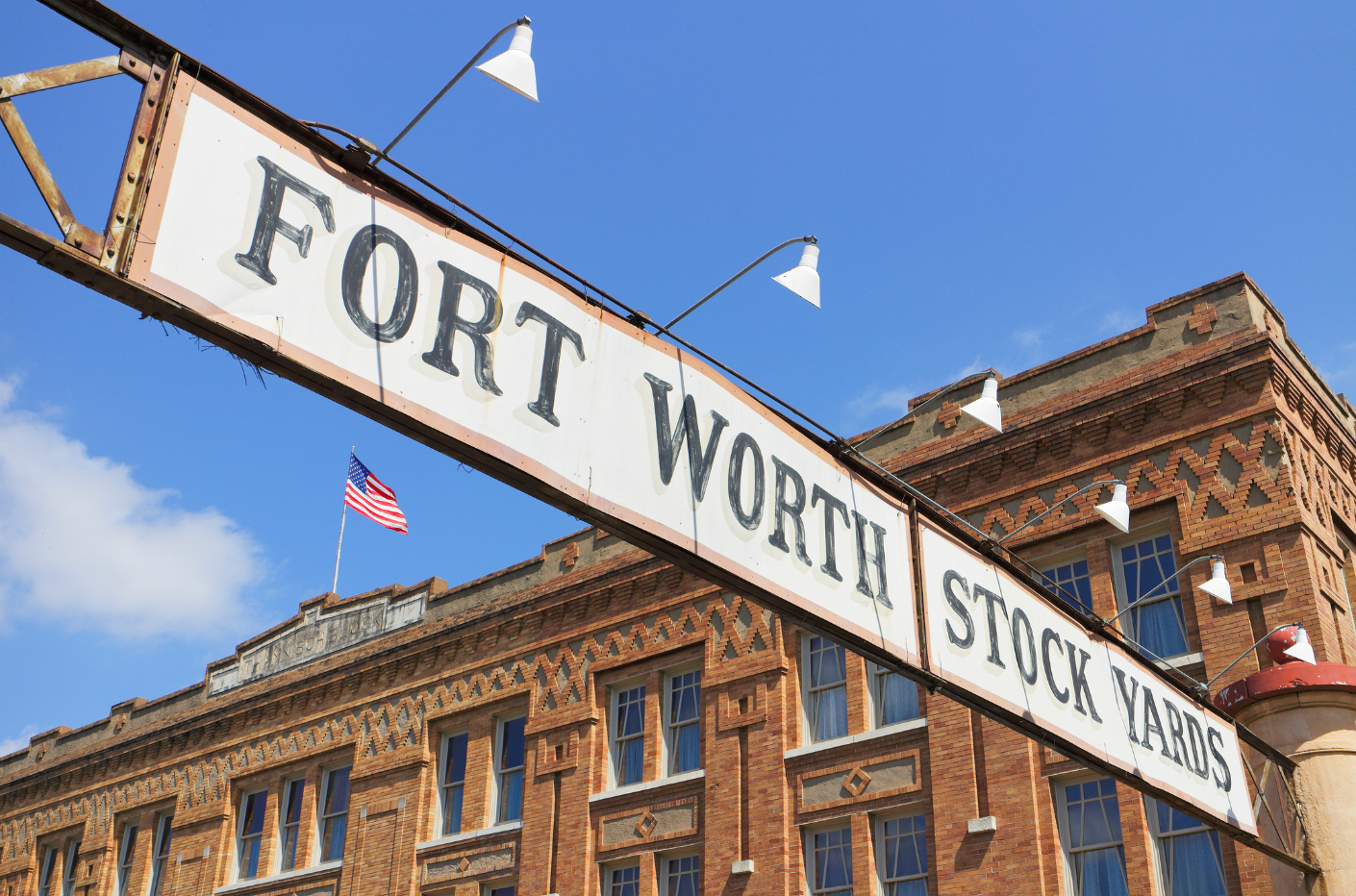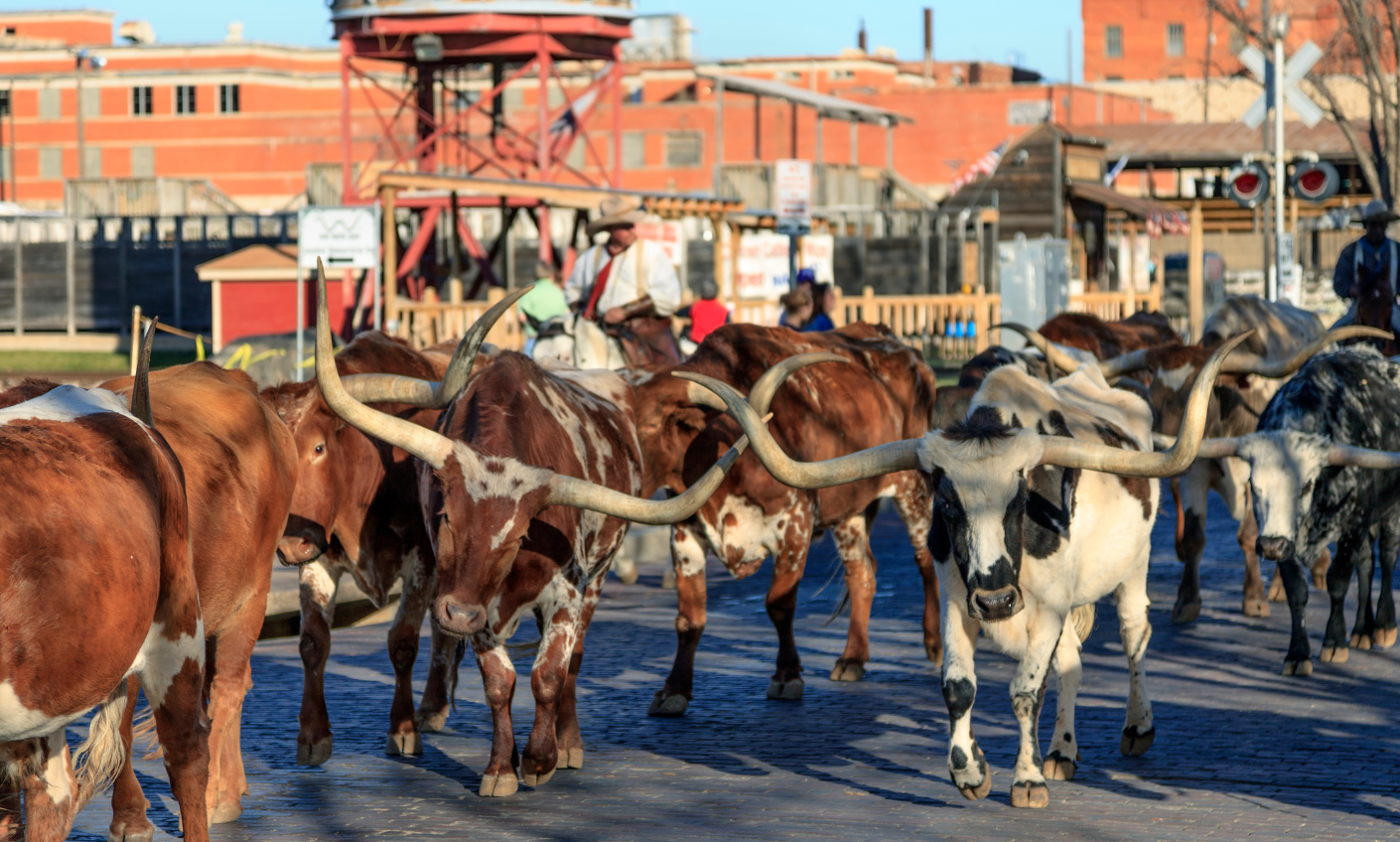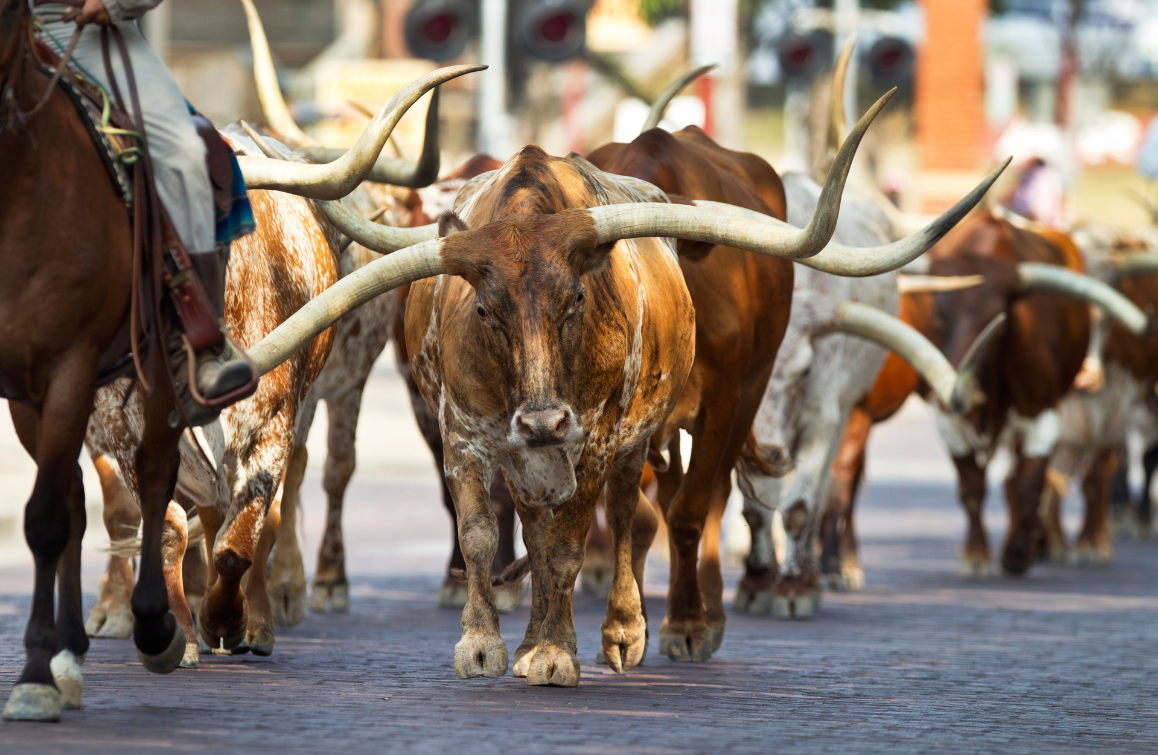Nestled in the heart of Fort Worth, Texas, the Fort Worth Stockyards stands as a testament to the city’s rich cowboy heritage and its pivotal role in the cattle industry. Steeped in history, this iconic district has evolved from a bustling livestock market to a vibrant entertainment destination, offering visitors a unique blend of Old West charm and modern-day attractions.
The Birth of the Stockyards
The story of the Fort Worth Stockyards dates back to the late 19th century when cattle ranching and trading were integral to the Texan way of life. With the arrival of the railroad in the 1870s, Fort Worth became a crucial stop for cattle drives heading north. This strategic location led to the establishment of livestock markets, including the Union Stockyards in 1887.
Boom Years and the Chisholm Trail
The late 1800s saw the Fort Worth Stockyards flourish, becoming one of the largest and busiest livestock markets in the United States. The Chisholm Trail, a historic cattle trail that extended from Texas to Kansas, played a pivotal role in bringing herds of cattle to the Fort Worth Stockyards. Cowboys, cattle barons, and traders converged on the stockyards, creating a vibrant and bustling atmosphere.
The Exchange Building and Livestock Commission Companies
In 1902, the iconic Exchange Building was constructed to house offices for various livestock commission companies. This building, with its distinctive architecture, became the epicenter of cattle trading activities. Livestock commission companies such as Swift and Company and Armour and Company operated out of the Stockyards, solidifying Fort Worth’s reputation as the “Wall Street of the West.”
Decline and Preservation
The advent of the trucking industry in the mid-20th century led to a decline in the use of cattle drives and rail transport, causing a downturn in the Fort Worth Stockyards. By the 1970s, the historic district faced the threat of demolition. However, community efforts and recognition of its historical significance led to the preservation of the Stockyards.
Modern-Day Fort Worth Stockyards
Today, the Fort Worth Stockyards has been revitalized as a living history museum and entertainment district. Visitors can step back in time as they stroll down Exchange Avenue, lined with cobblestone streets and historic buildings. The Stockyards Station, once a horse and mule barn, now houses restaurants, shops, and event spaces.
Must-See Attractions
- The Livestock Exchange Building: This historic structure houses offices and a museum, offering a glimpse into the Stockyards’ past.
- The Fort Worth Stockyards Rodeo: Experience the thrill of the rodeo, a tradition that has endured through the ages.
- Cowtown Coliseum: Built in 1908, this iconic venue hosts rodeos and other Western events.
- Texas Cowboy Hall of Fame: Celebrate the legends of the West at this museum, honoring those who have made significant contributions to cowboy culture.
- Billy Bob’s Texas: Recognized as the world’s largest honky-tonk, Billy Bob’s offers live music, dancing, and a true Texas-sized experience.
The Fort Worth Stockyards stands as a living testament to the city’s cowboy heritage and its pivotal role in shaping the American West. From its humble beginnings as a livestock market to its modern-day incarnation as a vibrant entertainment district, the Stockyards continues to attract visitors from around the world, inviting them to experience the spirit of the Old West in the heart of Texas.



Leave a Reply